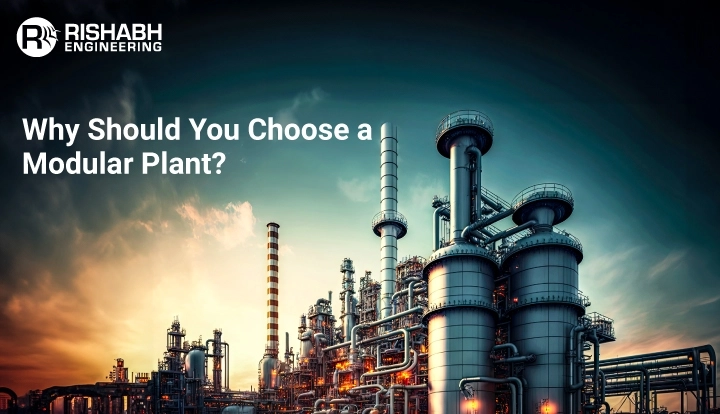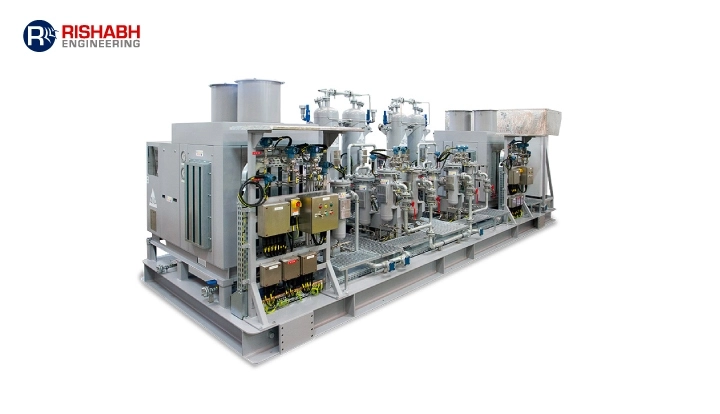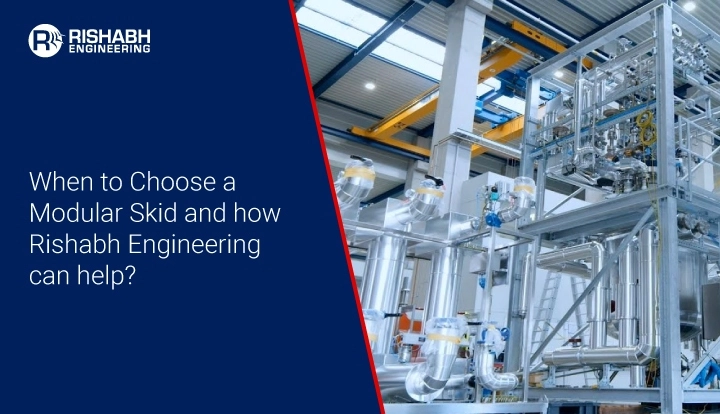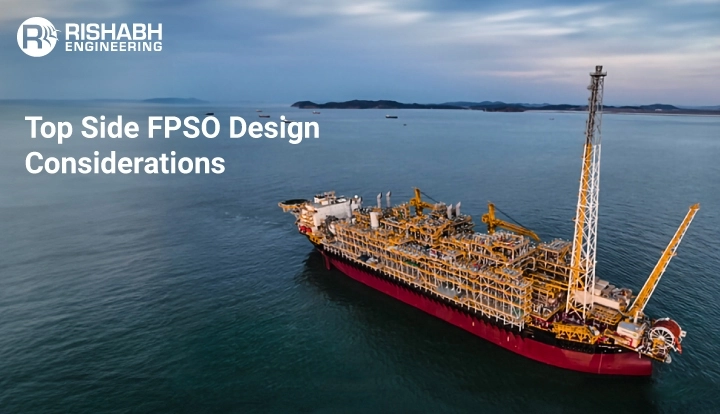
Maximizing Efficiency With Modular Plant Design
Choosing between traditional and modular industrial plants is becoming increasingly important in industrial plant development. Modular facilities, which are defined by off-site manufacturing and on-site assembly, are gaining appeal across industries due to their capacity to provide cost savings and increased efficiency. Multidisciplinary engineering design firms play an important role in navigating this decision by utilizing their knowledge to optimize design, expedite fabrication processes, and assure seamless on-site integration while maximizing the benefits of the modular plant design.

This article will discuss what is modular plant design, how it works, its pros and cons and, particularly, how a multidisciplinary engineering design company can help.
What Refers To Modular Plant Design?
Modular plant design is a building methodology that divides a plant into smaller, self-contained sections. These individual elements are manufactured in a controlled setting, such as a factory, and then transported to their final location for assembly and integration. This approach has various advantages over traditional on-site construction methods, including higher quality control, shorter construction times, and increased safety. Commonly referred to as modular process skid packages, they are tailored to specific industries and processes. Explore some of the most common modular process skid systems categories and their benefits.
How Modular Plant Design Works?
Here’s a step-by-step overview of how modular plant design works:
Design Phase
- Conceptual Design: Establish the project scope, including plant requirements and specifications. It would usually include process design, equipment selection, and initial layout.
- Thorough Engineering: Create thorough designs for each module, such as structural, electrical, mechanical, and piping systems.
Module Fabrication
- Off-Site Construction: The said sections are built in a controlled environment, typically in a factory or specialized fabrication facility. This setting promotes improved quality control, safety, and efficiency.
- Quality Control: Each component is rigorously tested and inspected to satisfy all design specifications and standards.
Transportation and Logistics
- Planning: Transporting modules from the fabrication facility to the plant location requires detailed logistics planning. This comprises route planning, permits, and logistics for huge, heavy parts.
- Transportation: They are transported appropriately, such as trucks, ships, or barges, depending on their size and location.
On-Site Assembly
- Site Preparation: Lay the groundwork for module installation, including foundations, utilities, and infrastructure.
- Module Installation: Module installation entails lifting and positioning modules with cranes or other lifting equipment. They are then linked to one another and the site’s infrastructure.
- Integration and Commissioning: Connect all systems (electrical, mechanical, and piping) and execute final testing and commissioning to ensure the plant runs properly.
Operation and Maintenance
- Training and Handover: This includes training the plant operators and maintenance teams. Provide all paperwork, including as-built drawings and operation instructions.
- Maintenance: Modular design simplifies the modular architecture, which allows individual modules to be replaced or updated without affecting the overall plant.
Advantages Of Modular Plant Design
Key characteristics and benefits of modular plant design include:
- Pre-fabrication: Building modules in a factory allows for more efficient use of resources and strict quality control.
- Scalability: The modular construction enables easy extension or change by adding or removing components.
- Reduced On-Site Building Time: Pre-assembling modules off-site considerably shortens on-site building time, reducing disturbances and delays.
- Enhanced Safety: Factory environments often provide safer working conditions than construction sites, lowering the chance of accidents and injuries.
- Cost Savings: Prefabrication and reduced on-site work result in lower labor, material, and project time costs.
- Flexibility and Customization: Modular plants can be tailored to specific requirements and are readily disassembled and relocated if necessary.
Disadvantages Of Modular Plant Design
While modular plant design offers many advantages, it also has some potential disadvantages:
- Initial costs: Specialized fabrication facilities and transit logistics require a significant initial investment.
- Design constraints: Limited flexibility in design changes once the sections have been produced.
- Integration Issues: Aligning and connecting components on-site may pose issues.
- Regulatory Compliance: Ensuring that all modules adhere to local codes and standards can be hard and time-consuming.
When To Choose Modular Plant Design?
Modular plant design makes sense for industrial plants in remote and hard-to-access locations or where speed and cost predictability are critical. It can also be preferred when dealing with labor shortages or if the project requires reduced onsite labor. And for projects that require extensive onsite customization or where the onsite labor vs. project scale is justified, a traditional stick-built plant makes more sense.
Here’s a high-level comparison between the modern and traditional approach
| Parameter | Modular | Traditional |
| Construction Time | Shorter – because of parallel processes | Longer – reliability on sequential construction phases |
| Cost Control | Higher, with reduced risk of overruns | Can be lower due to potential onsite challenges |
| Flexibility | High, easy to expand or modify | Low modifications can be costly and time-consuming |
| Quality and Safety | Enhanced with the controlled environment | Variable based on on-site conditions |
| Site Impact | Minimal, less onsite work | Extensive onsite activity |
Explore some of the scenarios when choosing a modular skid for a modular plant makes more sense.
How Can Rishabh Engineering Add Value Across The Modular Plant Design Lifecycle?
Multidiscipline engineering design companies play a crucial role in maximizing the benefits of modular plants. Their specialization spans various engineering disciplines, thus allowing them to offer comprehensive solutions that enhance project outcomes.
Here’s how we can add value across different project stages:
Conceptual Design and Feasibility Studies:
- Conducting feasibility studies to evaluate modular construction for the project.
- Creating early design concepts that meet project goals and constraints.
- To demonstrate the financial benefits of modular construction, it is vital to conduct cost-benefit analysis
Detailed Engineering and Design:
- Using modern engineering software to produce precise 3D models of the modular plant.
- Integrating engineering disciplines (civil, structural, mechanical, electrical, and instrumentation) to create a unified design.
- Ensure modular design fulfills regulatory and industry standards.
Project Management and Coordination:
- Coordinating with all stakeholders throughout the project lifecycle, from idea to commissioning.
- Using effective project management techniques to stay on track and within budget.
- Enhancing communication between manufacturing and on-site personnel for successful module assembly and integration.
Construction and Assembly Support:
- Supervise section fabrication at the factory to meet design specifications and quality standards.
- Coordinating with the logistics partner for module transfer to the site.
- Offering on-site support for component assembly and integration to resolve any issues quickly.
Commissioning and Start-up:
- Test and commission the modular plant to guarantee proper functionality.
- Training client operational staff to guarantee seamless plant start-up and operation.
- Providing continuous support and maintenance to ensure plant efficiency in the long run.
Final Words
The choice between traditional and modular industrial plants is becoming increasingly important in today’s economic development landscape. Modular facilities, which combine off-site manufacturing and on-site assembly, are gaining popularity across industries due to their capacity to provide cost savings and increased efficiency. Multidisciplinary engineering design companies like Rishabh Engineering offer specialized skid design services to help optimize design, accelerate fabrication processes, and assure seamless on-site integration. Their collaboration emphasizes the benefits of modular plant building, making it a wise choice for owners and operators seeking efficient and adaptable industrial solutions.
Seek Help With Modular Plant Design?
Our multidisciplinary engineering team excels in optimizing efficiency with innovative modular solutions tailored to your industrial plant needs.
Related Blogs
Related Blogs
Modular Process Skid Packages – Types and Benefits
Modular Process Skid Packages are today emerging as the most…
Critical Considerations For Choosing The Right Modular Skids
Modular Process Skid Packages, commonly called modular skids, are compact,…


